Fantasy Warriors is a fantasy miniatures board game for two players that was published by Grenadier Models Inc. in 1990.
Contents

Fantasy Warriors is a fantasy miniatures board game for two players that was published by Grenadier Models Inc. in 1990.

Fantasy Warriors is a miniatures wargame designed by Nick Lund that features battles between dwarves and orcs. [1] It comes as a boxed set with the following components:
The players decide on a playing surface large enough to hold both armies, and how many points can be spent on each army. Players then allocate those points on a warchief and various units. Each player records the eleven different attributes and statistics for each leader and unit. [3]
Each player rolls dice to decide which side moves first. Each player has their warchief make a boast that will effect the morale of the warchief's army. For example, if the warchief declares that he will not be moved from his spot, his army will get a morale bonus as long as the warchief does not move. [3]
The warchief for the first side issues orders to each unit to either Attack (charge into melee), Hold (stay in place), or Oppose (move to the best defensive position). The side then fires missile weapons, units that have been ordered to move do so, melee combat is resolved, and units check their morale. The other side then goes through the same sequence. [3]
There are three types of spellcasters in the game:
After Fantasy Warriors was published, Grenadier Models gradually released several hundred new sets of miniatures that could be used to replace or augment the original groups of orcs and dwarves. [4]
In the January 1992 edition of Dragon (Issue #177), Mike Bethke thought this "was an excellent game to get people started in miniatures gaming." He felt the rulebook was clearly written and amply illustrated, with good examples given for each situation. He thought the miniatures were reasonably well cast, although he criticized each miniature for having "a very annoying stub of plastic in the middle of its back [that] must be carefully cut away." He wasn't enthralled with the paper status counters, which he felt cluttered the playing surface, and also suggested that players glue them to cover stock to make them sturdier. He concluded by giving the game an above average rating of 4.5 out of 5, calling it "an excellent buy at $30, even if all you want are the 102 figures." [2]
In the next issue of Dragon (February 1992, Issue #178), Rick Swan called the game "a solid effort", and lauded the company for including so many individualized miniatures. He did feel that the combat rules were overly complex, especially for beginning players, but called the magic system "the most entertaining element of the Fantasy Warriors game." He thought the game would be much stronger with "more spells, imaginative scenarios [...] and judicious editing." He concluded by giving the game an average rating of 4 out of 6, saying, "There's still a lot to like, particularly in the boasting rules, what there is of the magic system, and all those nifty plastic orcs and dwarves." [3]

Warhammer 40,000 is a miniature wargame produced by Games Workshop. It is the most popular miniature wargame in the world, and is particularly popular in the United Kingdom. The first edition of the rulebook was published in September 1987, and the tenth and current edition was released in June 2023.
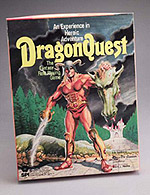
DragonQuest is a fantasy role-playing game originally published by Simulations Publications (SPI) in 1980. Where first generation fantasy role-playing games such as Dungeons & Dragons (D&D) restricted players to particular character classes, DragonQuest was one of the first games to utilize a system that emphasized skills, allowing more individual customization and a wider range of options.

Dragon Strike is a 1993 adventure board game from TSR, Inc. based on the Dungeons & Dragons (D&D) fantasy role-playing game. It was intended to be a pathway for beginners to start with, and for players to eventually play the full Advanced Dungeons & Dragons tabletop game after kindling their interest.

Warhammer is a tabletop miniature wargame with a medieval fantasy theme. The game was created by Bryan Ansell, Richard Halliwell, and Rick Priestley, and first published by the Games Workshop company in 1983.

Fantasy Warlord is a fantasy miniatures game released in 1990 by Folio Works. It was written by Ian Bailey and Gary Chalk who also did the illustrations.
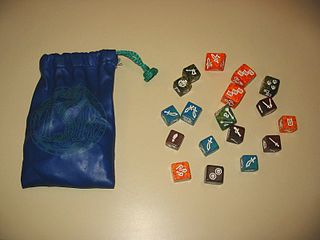
Dragon Dice is a collectible dice game originally made by TSR, Inc., and is produced today by SFR, Inc. It is one of only a handful of collectible dice games produced in the early 1990s. The races and monsters in Dragon Dice were created by Lester Smith and include some creatures unique to a fantasy setting and others familiar to the Dungeons & Dragons role-playing game.

Battle Masters is a miniature wargame by Milton Bradley, made in collaboration with Games Workshop in 1992. It is thematically similar to Warhammer Fantasy Battle, but with much simpler game mechanics. Like other Milton Bradley/Games Workshop partnership board games HeroQuest and Space Crusade, Battle Masters was designed by Stephen Baker, who later went on to design the popular game Heroscape.
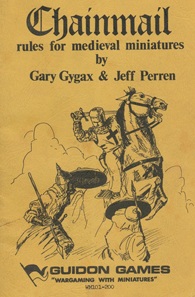
Chainmail is a medieval miniature wargame created by Gary Gygax and Jeff Perren. Gygax developed the core medieval system of the game by expanding on rules authored by his fellow Lake Geneva Tactical Studies Association (LGTSA) member Jeff Perren, a hobby-shop owner with whom he had become friendly. Guidon Games released the first edition of Chainmail in 1971.

Battlesystem is a tabletop miniature wargame designed as a supplement for use with the Dungeons & Dragons role-playing game. The original Battlesystem was printed as a boxed set in 1985 for use with the first edition AD&D rules. For the second edition of AD&D, a new version of Battesystem was printed as a softcover book in 1989.
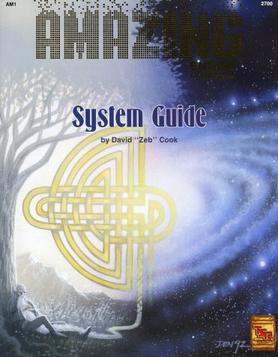
Amazing Engine was a series of tabletop role-playing game books that was published by TSR, Inc. from 1993 until 1994. It was a generic role-playing game system - each publication employed the same minimalist generic rules, as described in the Amazing Engine System Guide, but each world book had an entirely different setting or genre. David "Zeb" Cook was credited with the design of the game rules.
The Dungeons & Dragons Basic Game is an introductory version of Dungeons & Dragons (D&D) role-playing game packaged in the form of a board game. The original game was released in 2004 by Wizards of the Coast and was designed by Jonathan Tweet, one of the D&D 3rd edition designers. A new version of this game was released in September 2006.
BattleSpace is a science fiction wargame published by FASA Corporation in 1993. Set in the BattleTech universe, it simulates naval warfare in space.
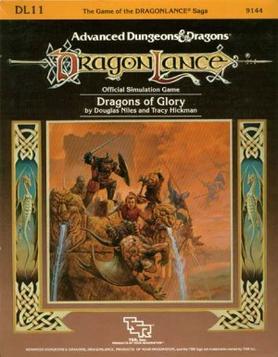
Dragons of Glory is a Dungeons & Dragons source book in a series of modules from the Dragonlance campaign setting. It is one of the 16 DL modules published by TSR between 1984 and 1986.

The Castle Guide is a supplemental rulebook published in 1990 for the 2nd edition of the Advanced Dungeons & Dragons fantasy role-playing game.
Demonworld is a tabletop wargame originally created by Hobby Products, a German gaming company. The game went out of production for several years but has recently been purchased and re-released by Ral Partha Europe, as announced on 8 June 2011.

Advanced Dungeons & Dragons CD-ROM Core Rules is computer program designed as an accessory for the Dungeons & Dragons fantasy role-playing game, originally published in 1996 and updated in 1999.

Wizard's Quest is a fantasy board wargame published by Avalon Hill in 1979.
Bladestorm is a fantasy combat board game that was published by Iron Crown Enterprises (ICE) in 1990.

Inferno is a combat board game that was published by Global Games Company in 1996.

Dragon Quest, is an adventure board game created by TSR, inc. in 1992, designed as a children's introduction to fantasy role-playing, using a simplified form of the Basic rules for Dungeons & Dragons. It was conceived as a commercial competitor for the popular fantasy board game HeroQuest.